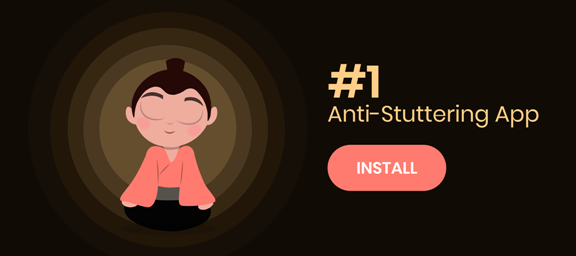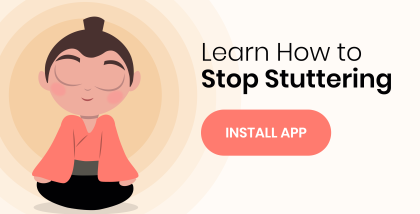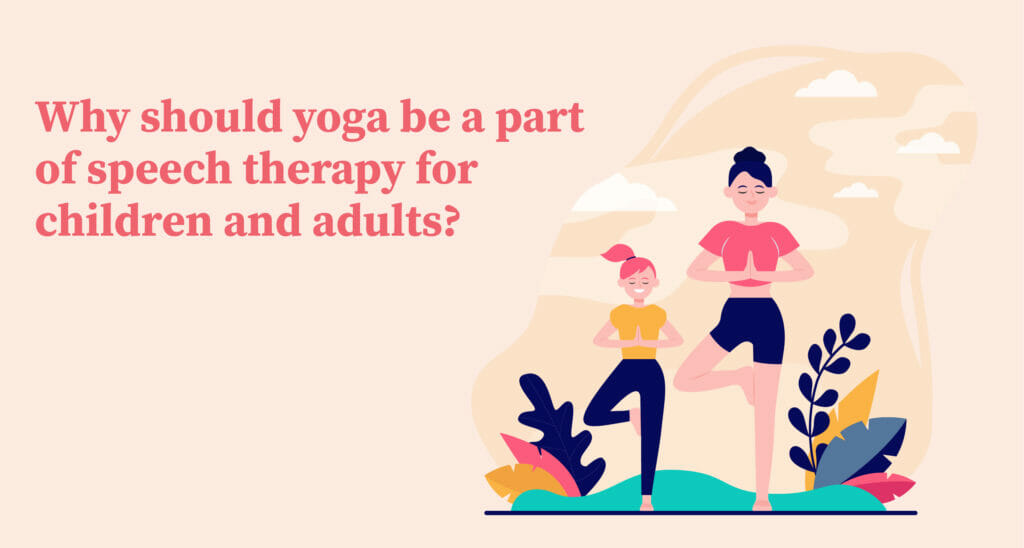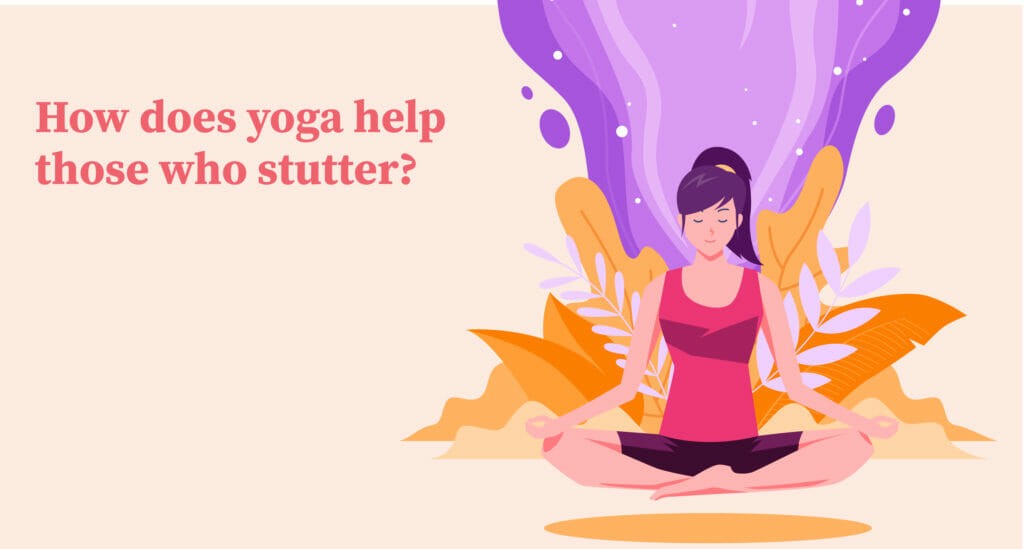Yoga is becoming incredibly popular across the globe with the stress levels mounting due to the pandemic. Lots of people who are not getting enough outdoor exercise are turning to yoga at home to remain healthy and stave off weight gain.
Yoga is not one exercise. It is a collection of different static and dynamic postures (or asanas) that focus on every organ and muscle group of the body. It can vary in intensity and difficulty between the beginner, intermediate and advanced levels. It is an ancient form of workout that benefits every organ system and the nervous system of an individual.
We have heard famous personalities claim how yoga has helped them overcome speech and fluency disorders. Although the research on yoga and how it affects stuttering is not extensive, there is enough proof that ascertains its remediating effects on the intensity of stammering in children and adults.

Does yoga really help reduce stuttering?
According to Heather Kauffman’s research published in 2016, yoga modulates the activities of the autonomic nervous system. Several other studies already show how yoga can reduce anxiety, increase focus and absolve physical and mental stress. While we know that stress, fatigue or anxiety do not cause stuttering, they can make blocks, repetitions and prolongations much worse in a person who stutters.
Stuttering is a heterogeneous speech disability. Regular practice of yogasanas can reduce the intensity and frequency of stuttering by simply alleviating the physiological stress on the muscles involved in speaking. Moreover, mindfulness is a natural part of most asanas, which offers peace of mind, confidence and control of one’s brain functions necessary for the production of fluent speech. While yoga might not be a magical cure for stuttering, it is indeed an accessible option for those interested in gaining more control of their body and mind, necessary to stutter with ease.
Why is it critical to take charge of one’s emotions before they can control their stutter?
When stuttering and anxiety work as two elements of a feedback loop. A person might be anxious because they anticipate stuttering, which might cause tightening of the muscles in and around the vocal cord necessary to produce speech. This can result in repetitions, blocks and prolongations that contribute to more anxiety, which further worsens the stutter. It seems like a never-ending vicious loop.
Well, it doesn’t have to be, if you can manage to control the physical strain or reduce the level of resident anxiety. Yoga can give you a way to control your negative emotions including anxiety, shame, and fear that stuttering almost always brings along. Taking control of your emotions and getting rid of the negativity can help people who stutter to move away from escape and avoidance behaviours.

Why should yoga be a part of speech therapy for children and adults?

Yoga can be a fun and enriching experience for children who stutter. as modern parents, we might seek out the best speech therapists and counsellors for our children, but yoga has multiple benefits on the physiology and psychology of growing children that modern science cannot deny.
Here’s how a child or even an adult can benefit from yoga as a part of speech therapy –
- Yoga and learning – Each asana is named after a creature or element of nature like the downward dog or the tree pose. Children can have fun exploring new vocabulary and the make-believe that comes with assuming each pose named after an animal. Adults can learn new poses, their Sanskrit names and their benefits for each part of the body. Adults can complete yoga courses and get certifications that can help them expand their job and career options. Including yoga in speech therapy can be enriching and empowering for adults and children alike.
- Yoga and respiration – Controlling one’s breathing is crucial for managing one’s stutter. However, for children, breathing exercises can be quite boring and difficult to remember. Incorporating breathing exercises as a part of therapy in the form of pranayama is not only interesting but also quite easy to remember as each breathing technique in yoga has a name. Teaching conscious breathing to children and adults is much easier through yoga and pranayama. Simple techniques like Anuloma-Viloma, Bhramari and Kapalbhati can help a person gain control over their breathing and engage in coordinated movement of their facial and vocal muscles.
- Yoga and speech production – Yoga, pranayama and meditation involve fine motor planning via execution of breathing techniques and chanting. The execution of yoga sessions in predictable routines among a select group of people can create a familiar environment that encourages the learning of motor sequences among children and adults. Children and adults who have trouble with fine motor planning can find confidence from the repetition of the gross and fine motor routines, and choral speaking that occurs during pranayama and meditation chants. Therapists can include other chants and modify the sequence of exercises to encourage sound production among their clients.
How does yoga help those who stutter?

Research by Kauffman shows that yogasanas can induce the activation of the parasympathetic nervous system and the suppression of the sympathetic nervous system. The parasympathetic nervous system is responsible for lowering blood pressure and cortisol levels in the body. Its activation releases neurotransmitters that promote relaxation and naturally reduce the anxiety response of the body. Lowered cortisol and adrenaline in the system allows the person to relax physically and mentally.
Yoga not only consists of asanas but also breathing exercises (pranayama) and meditation that can result in the activation of the parasympathetic nervous system becoming dominant. In such conditions, the person can control their feelings and execute their speech without letting stress, fatigue or anxiety get in their way quite easily. Several studies on people who stutter note that meditation, pranayama and asanas clinically reduce blood pressure and other signs of stress. Regular practice of yoga imbibes confidence that definitely contributes to smoother and effortless stuttering.
Can yoga cure stuttering?
There is currently no guaranteed cure for stuttering. Yoga can help a person relax which is necessary to produce sound and speech. According to Ginsberg (2000), stuttering involves complex physiological, emotional and anxiety factors. A disorder as heterogeneous and complicated as stammering calls for a wholesome treatment or therapy plan. Indeed the relationship between stuttering and yoga isn’t direct or simple, but it is also true that yoga has several potential positive effects on the lives of those who stutter.










